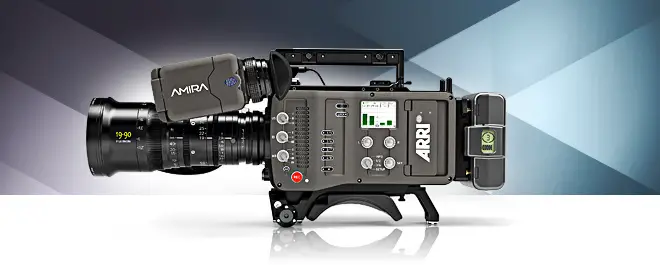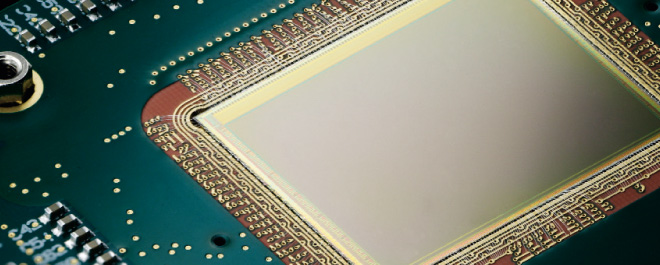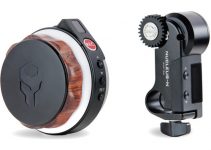It is that time of the year again – IBC 2014 is just around the corner and the world of professional video and lighting equipment is kicking off in high gear.
Sony have already bombarded us with an onslaught of new camera releases (probably a record for 2014 for a single manufacturer, we’ve officially lost count already), Blackmagic Design a releasing firmware updates steadily over the summer, and as we get closer to Europe’s leading broadcast industry event, announcements aren’t looking to slow down anytime soon.
Legendary German camera and lighting equipment manufacturer ARRI, makers of ALEXA – the highly successful (benchmark as most would say) digital cinema camera, just announced a 4K UHD (3840 x 2160) ProRes software upgrade for their new documentary style camera the ARRI AMIRA.
The software upgrade requires no further modification, and it will enable in-camera Broadcast Ultra High-Definition (3840 x 2160) ProRes recording up to 60fps in all flavours – 4444, 422 HQ, 422, and LT on CFast 2.0 cards. Availability is expected towards the end of 2014 directly from the ARRI Online License Shop as well as authorised dealers.

The announcement comes just two weeks before IBC 2014, the premier professional broadcast event in Europe held in Amsterdam. Pre-major show press releases such as this one are becoming an increasingly popular strategy among camera, lighting, and production equipment manufacturers.
In the age of social media, it is becoming more difficult for camera manufacturers to keep updates and equipment releases from Internet-savvy users, hence the race to outbid each other in getting information to the public first before major industry events such as NAB and IBC. As such, ARRI’s pre-IBC announcement of the imminent 4K upgrade to their AMIRA comes at no surprise just days before IBC 2014.

However, what is more surprising here, is that the “usually” 4K resistant ARRI, are turning around and announcing a UHD upgrade to their new 1080p/2K AMIRA. Long proponents of the ultimate colour fidelity, dynamic range, and cinematic image quality, ARRI were not rushing to release a 4K camera. And the fact that they are offering a software upgrade for the AMIRA, rather than a brand new camera with a new 4K sensor, is quote the testament to the German engineering prowess, they have been proudly touting in the high-end digital acquisition arena.
With the Hollywood domination of the ALEXA (which tops out at 2.8K in ARRIRAW, or the 3.5K in Open Gate Mode for VFX/reframing work) one could infer that ARRI were at some point going to announce a 4K version either of the Alexa, or a new 4K camera. In my mind, there have no need for a new 4K camera as their superiority in terms of image quality comes mainly from the mind-boggling 14+ stops DR, Super 35 (3414 x 2198) ALEV III CMOS sensor, which both the Alexa and the Amira share.

The Alexa/Amira sensor is very well capable of up-rezing the 2K footage to 4K for cinema projection as it has been done on countless Hollywood feature films and higher-end productions. Build quality, colour science, de-bayering algorithms, ARRI pedigree and all that aside, the AMIRA is most of all targeting single shooters in a documentary/broadcast environment and by utilising the 1.2x up-sample pattern in-camera to optimise the image for 4K output makes much more sense instead of bringing out a brand new 4K sensor, as efficiency and quick-turnaround are key in a broadcast environment.
In the case of big-budget Hollywood productions, up-rezing to 4K is done in post-production. The AMIRA however, now offers shooters a much quicker and efficient solution for a 4K delivery.
Although there hasn’t been any official 4K footage from the AMIRA yet, we’re sure samples will trickle in as we get closer to the end of the year, or even at IBC probably. There is also no official word yet on pricing, but our sources tell us it will be “very competitively priced and affordable”.
The 4K upgrade for the ARRI AMIRA puts the already impressive camera into a whole new category with the ability to record 2K ProRes up to 200fps in addition to the upcoming 4K (UHD) up to 60fps all in-camera. And not only that, ARRI might have just validated 4K for broadcast as the future more than anything else.

PRESS RELEASE
(August 26th 2014, Munich) – A new software upgrade for ARRI’s documentary-style AMIRA camera will allow it to record ProRes UHD files, answering the 4K requirements of some productions. The upgrade is expected to be available for purchase at the online ARRI License Shop by the end of 2014.
DELIVER ANY FORMAT
While widespread adoption of 4K or UHD for broadcast is still a long way off, an increasing number of content owners are becoming concerned that they ought to safeguard the longevity of their programs by ensuring that they will be suitable for UHD transmission, should that become a standard in the future.
For those productions that do need to generate UHD deliverables, AMIRA will now offer the ability to record all ProRes codecs in Ultra High Definition 3840 x 2160 resolution directly onto the in-camera CFast 2.0 cards, at up to 60 fps. This feature, activated through an affordable software license (and a sensor calibration for existing AMIRAs), comes in response to feedback from AMIRA customers, some of whom have been quizzed about 4K deliverables by clients. It is made possible by the camera’s exceptional image quality, its processing power, and its reprogrammable system architecture.
Whether a production is pursuing a UHD workflow all the way through to distribution, or simply wishes to archive in UHD in order to future-proof itself against industry developments, AMIRA now offers an easy solution that requires no additional processes in postproduction.
IN-CAMERA PROCESSING
The ALEXA/AMIRA sensor has repeatedly proved its ability to deliver outstanding image quality for the 4K or even IMAX theatrical releases of high-end feature films such as Gravity, Maleficent and Iron Man 3. This proves that the ALEXA and AMIRA camera systems are already future-proof and more than suitable for the next generation of distribution formats.
For major feature films, an up-sample to 4K can be carried out after visual effects and other postproduction tasks have been completed at 2K resolution. For certain fast-paced AMIRA productions, however, there may not be the time or resources for such processes in post, which is why a 4K or UHD output direct from the camera has been requested.
AMIRA’s UHD output utilizes the same efficient 1.2x up-sample filter that allows ALEXA’s Open Gate mode to optimize the camera’s image performance for 4K distribution, as well as the same best-in-class sensor pixels. The up-sample to UHD happens in camera, and in real time.
SAME GREAT IMAGE QUALITY
Outputting UHD broadens the distribution options for the superior image quality that has helped make AMIRA, and ALEXA, such a success. The wide, 14+-stop dynamic range remains unaltered, as does the accurate colorimetry, natural skin tones, and organic look and feel. By making that high-quality image data coming out of the sensor compatible with higher spatial resolution formats, the UHD upgrade answers the concerns of certain regions and productions about a 4K future, allowing AMIRA to be used on any project, no matter what deliverables are required.
Markus Duerr, ARRI’s Product Manager for the AMIRA system, says, “Feedback about AMIRA from all over the world has been overwhelmingly positive and it is clear that the camera is already a great success, being used on an amazing variety of challenging productions. Already acclaimed for its phenomenal image quality, ease of use and versatility, the new ProRes UHD output will take these benefits even further, adding value for customers in areas like China, where 4K is a major focus of industry attention.”
Wildlife cinematographer Rolf Steinmann, who was nominated for an Emmy Award this year in recognition of his work with ALEXA on the BBC’s Wild Arabia series, is currently using his AMIRA on a movie for Disney Nature. He comments, “For cameramen like me who own their gear, the UHD upgrade is a great way to stay future-proof. From now on when there’s pressure from the production side to deliver UHD, I can continue to work with AMIRA and won’t have to compromise on image quality or on the camera’s robustness and reliability.”
About ARRI:
With headquarters located in Munich, Germany, Arnold and Richter Cine Technik (A&R) was founded in 1917 and is the world’s largest manufacturer and distributor of motion picture camera, digital intermediate (DI) and lighting equipment. The ARRI Group comprises a global network of subsidiaries and partners that covers every facet of the film industry, including worldwide camera, grip and lighting equipment rental through ARRI Rental; turnkey lighting solutions through the ARRI System Group; lab services, postproduction and visual effects through ARRI Film & TV; and film distribution through ARRI Worldsales. Manufactured products include the ALEXA camera system and AMIRA documentary-style camera; Master Anamorphic lenses; L-Series LED and M-Series HMI lights; Pro Camera Accessories; and ARRISCAN archive technologies. The Academy of Motion Picture Arts and Sciences has recognized ARRI’s engineers and their technical contributions with 18 Scientific and Engineering Awards.
For locations and more information please visit www.arri.com
Disclaimer: As an Amazon Associate partner and participant in B&H and Adorama Affiliate programmes, we earn a small comission from each purchase made through the affiliate links listed above at no additional cost to you.


